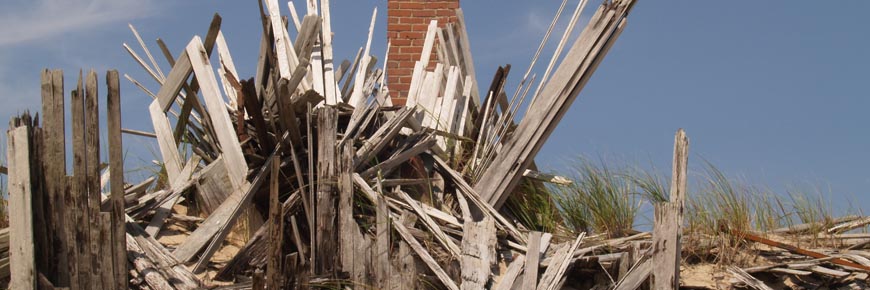
Cultural history
Sable Island National Park Reserve
For an isolated bar of sand far from the mainland, Sable Island has a long and fascinating cultural history of settlement and visitation that spans four centuries.
The first documented human visitation to Sable Island was by Portuguese explorers in the early 16th century. Throughout the 1600s and 1700s, several unsuccessful attempts to settle the island were made, but human habitation was generally sparse over this period although various domesticated animals such as horses, cattle, pigs and sheep were left on the island over the years. The island was also occupied seasonally by shipwreck salvagers known as "wreckers."
Historically, there was a great deal of marine traffic in the vicinity of Sable Island. It lies within one of the richest fishing grounds in the world, and is near one of the major shipping routes between Europe and North America. Before modern navigation systems were developed, rough seas, storms and fog made the island a major hazard to navigation on the east coast, and since 1583 there have been over 350 recorded shipwrecks on the island, earning it the title of "Graveyard of the Atlantic."
Life-Saving Stations
In 1801, in an effort to reduce the suffering and loss of life and cargo that resulted from these frequent shipwrecks, the Nova Scotia government established the first of multiple life-saving stations on the island. By 1895 there was a large main life-saving station and four smaller stations along the island's 42-kilometre length, as well as two lighthouses. Shelters for shipwrecked sailors were also built along the coast of the island. Look-out towers and regular horse patrols along the beaches helped life-saving station staff find ships in distress, but Sable’s far-reaching sand banks meant floundering ships were often far from shore and rescue operations took a long time (often four to five hours of rowing each way). Each station employed up to six men, who lived on the island with their families during their years of service. With the advent of more accurate navigational equipment following the Second World War, shipwrecks on Sable became less frequent, and in 1959 the federal government closed the life-saving stations. The last light tower was automated in 1987 and soon afterwards the remaining lighthouse-keeping staff and their families had left the island.
Recent History
By then, however, other government departments and industries had already established a wide variety of operations on Sable Island. In the early 1890s, a meteorological station was built that expanded over the years to become the current "Main Station" of the island. During the 1960s, Sable Island was a hotspot for the oil industry, and up to nine oil wells were drilled from the surface of the island. The Department of Fisheries and Oceans has operated a research program on the population biology and ecological role of grey seals for over 50 years, and has worked on collaborative seal research projects with Dalhousie University. A helicopter refuelling station on Sable Island has been maintained by the Canadian Coast Guard for Search and Rescue operations, and there is an emergency landing station for offshore industries, which currently operate four to six natural gas platforms near Sable Island’s shores. Numerous light and telecommunications towers, as well as research facilities and storage sheds, have been built on Sable Island, but the largest cluster of buildings is found at Sable’s Main Station.
Main Station
Main Station is centred on the work of the Meteorological Service of Canada, but acts as the island's administrative and communications centre. Year-round, staff collect weather data, coordinate aircraft arrivals and departures and the transportation of freight and personnel, maintain buildings and technical equipment, and provide support for researchers and visitors. Main Station infrastructure includes several generators and banks of fuel tanks, a water treatment plant, a mechanic shop, vehicle storage sheds, and staff and visitor accommodations.
Up to six persons live on the island all year but the population of Sable Island increases to as many as 25 people at different times throughout the year as various scientific groups visit for periods of between one week and three months.
Over the centuries, inhabitants of and visitors to Sable Island have documented their experiences in a variety of ways, and the archive of books, watercolours, photographs and documentary films that explore the beauty and mystique of the island grows annually. These works help to build public appreciation of this special place, and give people unable to visit the island an opportunity to understand the history and reality of life on Sable Island.
Sources: Nova Scotia Museum and Green Horse Society websites, Meteorological Society of Canada, Environment Canada, Department of Fisheries and Oceans.
Related links
- Date modified :